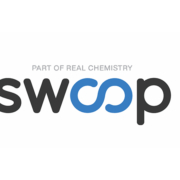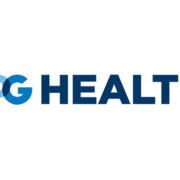How marketing automation can help rare disease companies break through
How marketing automation can help rare disease companies break through
By Ravi Singh
By definition, a rare disease is a medical condition that affects fewer than 200,000 people in the United States. So, for pharmaceutical commercial teams promoting rare disease products, finding the patients who need these innovative therapies can feel like searching for a needle in a haystack.
Traditional pharmaceutical sales and marketing approaches will be inefficient when trying to reach such a small population. To maximize efficiency and effectiveness of commercial efforts, commercial leaders must take a creative approach to their targeting strategy. In many cases, this means identifying patients before they are even diagnosed with a rare disease. This approach requires providing health care practitioners (HCPs) with disease-awareness education in addition to traditional product marketing. And, to reach patients before diagnosis, commercial teams must get in front of a broad group of primary care physicians in addition to the specialists who treat the rare disease.
Marketing automation can help commercial teams engage effectively with a large number of HCPs. With a marketing automation effort, a commercial team can share relevant educational materials with HCPs in a digital format and monitor engagement to identify the highest priority physicians, which can inform the field sales force’s efforts.
Particularly for pharma companies with limited resources – which is commonly the case for companies developing rare disease products – marketing automation allows them to deploy their often-small sales forces more effectively, and helps reps prioritize their efforts.
Following a three-step approach, a rare disease company can deploy a robust marketing automation effort that drives commercial success.
Step 1: Uncover the customer journey
Implementing a marketing automation program starts with analysis of the customer (i.e., HCP) journey. The commercial and marketing teams should work together to divide their target list into groups based on where each target is in their journey. For example, the HCPs could be sorted by those who are:
- Not familiar with the disease.
- Familiar, but have not diagnosed the disease.
- Aware of the product.
- Ready to prescribe the product.
- Already treating patients with the product.
To categorize targets into these groups, pharma companies should use prescribing history, call history and engagement with previous marketing programs, along with any other customer data to which they have access. Additionally, the sales force is a valuable source of knowledge on a company’s targets. The commercial team should capture local knowledge from the sales force and use that information to further inform the customer journey.
Step 2: Build a content library
The next step in developing a marketing automation program is to create the content for the campaign. Because a marketing automation program requires frequent digital touchpoints to generate useful engagement data, marketing teams must develop a wide range of materials about both the product and the disease – from educational articles to product efficacy data to detailed case studies.
And the content should take multiple formats. In addition to emails, the company should consider a product website as well as articles on third-party platforms. It’s crucial that the team is able to track engagement data (i.e., email opens, clicks, webpage bounce rates, etc.) across all its content.
As the marketing team develops content, it must think about the flow of HCPs through the customer journey. If an HCP is starting out in the first group – unaware of the disease – the company should first serve unbranded content about the rare disease. If the HCP engages with that first piece of content, they should be sent more detailed content about the disease and how to identify patients. As the HCP continues to engage, the company can begin to introduce the product and share treatment advice.
Companies should serve HCPs starting in one of the other groups – where they are aware of the product or prescribing it – more detailed and product
-specific content from the start.
Finally, the marketing and commercial teams must develop content for HCPs who don’t initially engage with the campaign. For example, if a physician doesn’t open an email, the team should consider sending the same email with a new subject line a week later. And, if they still don’t open the email, the team could serve them new content at a later date. It is important to continue contacting HCPs who don’t engage for two reasons:
- The company might have categorized them in the wrong group and will have to experiment to some extent to uncover this error. For example, the company might have inaccurately categorized an HCP as prescribing the product when they are actually unaware of the rare disease. Following up (at appropriate intervals) with different content gives the company a chance to uncover the HCP’s true position the customer journey.
- If the content isn’t relevant to an HCP today, the HCP might see a patient showing symptoms of the rare disease in the future.
Step 3: Measure, refine, and repeat
Once the commercial and marketing teams have mapped the customer journey, grouped the targets, and developed content to reach HCPs at the various stages of the journey, one more step remains before a company can launch its marketing automation campaign. The marketing and commercial teams must decide how many digital engagements should take place before they flag an HCP as “high priority” and pass them along to the sales force.
Once the teams determine this threshold number, the company should launch its marketing automation campaign and begin a thorough measurement effort. By collecting and reviewing comprehensive campaign data, the company can begin to identify trends that help it improve the campaign over time. For example, it might find that certain specialty HCPs have a higher propensity to prescribe a company’s product than primary care physicians, regardless of engagement. The team should share that data with the sales force to help them prioritize their targets and call on the specialty HCPs first.
Companies should experiment to perfect this engagement threshold number over time. For example, if reps are falling behind in their follow-up efforts or express that the leads are not as interested as anticipated, the commercial and marketing teams should increase the threshold. Alternatively, if they set the bar too high and end up passing few HCPs to the field sales team, they should consider lowering the engagement threshold.
Companies can also use data to refine their efforts with HCPs who are not engaging with the campaign. Over time, data analysis can help companies identify the best cadence at which to follow up on unopened emails or to pinpoint the best day and time to reach physicians each week.
Once the marketing automation program has been launched and the company has measured results and refined the program based on data, it must ensure the campaign is set up in a continuous cycle. To maximize the effectiveness of the campaign, a field visit should trigger the transition of the HCP into a new category on the customer journey, which then leads to new digital promotion. For example, if an HCP who started in the “unaware of the disease” group engaged with the program and was visited by a rep, that HCP should now be considered ready to diagnose and moved into the next group on the customer journey. Following the rep visit, the HCP should receive new content related to their new position on the customer journey map. If the teams are not aligned, HCPs can fall off the radar after reaching a certain point in a customer journey or can receive mixed messages from the marketing and commercial teams.
Best practices to maximize marketing automation effectiveness
Implementing a marketing automation program and using it to drive sales force activity with HCPs can generate commercial results. In one case, a rare disease manufacturer we worked with found HCPs who had engaged with digital marketing materials and then called on by the sales force were six times more likely to enroll new patients than those who had only been visited by a rep but did not engage with the marketing automation program.
Companies considering implementing marketing automation for rare disease promotion should keep in mind these best practices:
- Keep the marketing and commercial teams closely aligned. Marketing automation requires the marketing team and the sales force to work together to ensure coordinated communication with HCPs. Reps must understand what information an HCP has received in order to tailor the call to that physician’s interests and needs. This information-sharing also helps reps make decisions. For example, if the commercial and marketing teams send a rep two high-priority HCPs – one who is unaware of the disease and one who is ready to prescribe the product – understanding where each HCP is on the customer journey and what communication they’ve already received helps the rep determine who to visit first and how to tailor the visit to the information each HCP needs.
- Implement a system to collect field feedback. Securing buy-in from the field is critical to the success of a marketing automation program. Sales reps must be confident the targets that the commercial and marketing teams recommend are truly high priority. Allowing reps to provide feedback on the program – such as if they’re receiving too many or too few “high priority” targets – will encourage their buy-in because they’ll know their voice is being heard and considered.
- Test with a pilot group. Before implementing a marketing automation program across all targets, the company should pick one group from the customer journey and test the program with that group of physicians before rolling out the full campaign. This allows the company to identify any issues with the campaign, such as confusing messaging or an engagement threshold that is set too low. Then, when rolling out the campaign widely, the marketing team should start with one group at a time as to not overwhelm the sales force. If it launches across all targets at once, the company will likely receive a large number of HCPs hitting the engagement threshold at once.
Rare disease companies have a valuable mission to get their therapies to the patients who desperately need them. But with such a small target audience, and often limited resources, identifying those patients is a challenge. A marketing automation campaign can arm the commercial team with valuable engagement data to help them better prioritize targets and more easily find the proverbial needle in the haystack.
Ravi Singh is an associate manager at Beghou Consulting.









